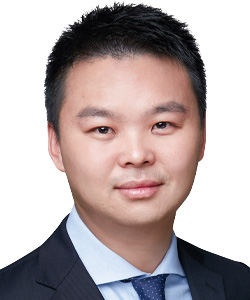Listed companies have been extremely active in the field of private equity (PE) funds in recent years, both as managers and investors. In fact, listed companies have participated in the establishment of private equity investment fund management platforms since 2010.
Dakang Farming (renamed Dakang Agriculture) and Silicon Paradise jointly established a merger and acquisition (M&A) fund in 2011, which was regarded as the beginning of the “listed company + PE” pattern. Listed companies have explored many models for establishing funds in co-operation with PE institutions through practice.

Non-equity Partner
Zhong Lun Law Firm
Some of them present various commercial demands based on control rights, consolidated statements, exit methods, nature of partners and balance of interests. Some of them include compliance considerations such as information disclosure and supervision of the Asset Management Association of China (AMAC).
The organizational forms of PE investment funds can be divided into limited partnerships, companies and contractual funds. Currently, the market is dominated by limited partnerships. Therefore, the following analysis is made mainly based on limited partnership funds.
Form 1: A listed company or its wholly-owned/held subsidiary acts as the limited partner (LP) of a fund, and an external institution acts as the general partner (GP) and manager of the fund.
Other LPs may include major shareholders and other related parties of the listed company, other companies related to the industry of the listed company, and market investors raised by the manager.
According to the Partnership Law, the GP of a fund performs partnership affairs on behalf of the fund and assumes unlimited joint and several liability. The LP does not perform partnership affairs. The listed company generally does not control the fund, and the fund is not included in the consolidated statement of the listed company under such a structure.
However, it should be noted that at present, when a listed company only acts as an LP, it may appoint members to the investment decision-making committee (the investment committee) of the fund, and the appointed members of the investment committee occupy a majority of seats and have one veto.
A listed company under such a case may be deemed to have actual control over the fund based on the principle of substantive judgment. Meanwhile, the listed company may also face the risk that it may be deemed to have actually performed partnership affairs for holding a majority of seats in the investment committee.
The management fees and revenue share at the fund level are generally paid directly to the external institutions, who act as GP and manager under such a structure. Listed companies mainly receive investment income from the fund level.
Form 2: A listed company acts as LP and its subsidiary participates in GP. In detail, a listed company or its designated subsidiary is the LP of the fund. A wholly owned/held/participated company of the listed company is the GP of the fund.
Other investors (if any) of the GP are mostly external investment institutions. According to the Partnership Law, a listed company shall not directly act as the GP of a fund. Therefore, a listed company usually realizes fund management through participation of its wholly owned/held/participated company in the establishment of a GP.
AMAC currently requires a GP to be related with the manager. For example, if a GP is the wholly owned or controlled entity of a listed company, such GP (in case the GP and the manager are the same entity) or another entity (in case the GP and the manager are different entities) actually controlled by the listed company need to apply for registration of a private fund manager from the perspective of supervision of the AMAC.
In addition, based on the above-mentioned analysis, if the GP and the manager are controlled by the listed company, the fund may be required to be included in the consolidated statement of the listed company. The management fees and revenue share of the fund under such a structure can be directly distributed to the subsidiary of the listed company to a certain extent.
If the GP is an entity participated by a listed company, and its major interests are held by the external manager, or it is under the same actual control with the external manager, the fund can be recognized as not controlled by the listed company and is not required to be included in the consolidated statement of the listed company, in the case of a relatively balanced setting of members of the investment committee.
If the related entity of the listed company does not participate in the manager’s interests under such a structure, the management fees are still mainly paid directly to the external management institution, but the listed company can directly enjoy the revenue share through the participating subsidiary.
Other structures. In addition to the above two typical structures, the following structures are also used in practice: (1) a listed company or its designated entity acts as the LP, and the shareholders, current or former officers and other employees of the listed company participate in the GP; (2) the listed company or its designated entity acts as the LP, and its subsidiary and the external institution jointly act as the GP; and (3) the subsidiary and other affiliates of the listed company act as the GP. Capital is mainly raised from third parties and is contributed by the listed company with a small proportion.
OTHER ISSUES
Information disclosure. As a public company, a listed company shall not only comply with laws, regulations and the AMAC’s relevant requirements for PE funds when setting up a fund, but also conform to specific rules of the stock exchange for information disclosure.
Exit method. The main investment areas of listed companies participating in funds are generally upstream and downstream enterprises of the listed companies. In addition to an IPO of the invested company as a way of exit, an important advantage is that the listed company can acquire the invested company in order to achieve its purpose of including such cultivated company into its system.
If the listed company acquires the target enterprise by way of issuing shares in such case, the problem of cross-shareholding will occur, as the fund is a shareholder of the target enterprise and the listed company is the fund’s investor.
At present, the measures that can be referred to include acquisition of the shares held by the fund shareholder for cash, withdrawal of fund shareholder from the target enterprise, and commitment by the listed company to withdraw from the fund within a certain period of time, and to abandon corresponding voting rights.
Dai Guili is a non-equity partner at Zhong Lun Law Firm

Zhong Lun Law Firm
28, 31, 33, 36, 37/F, SK Tower
6A Jianguomenwai Avenue
Chaoyang District, Beijing 100022, China
Tel: +86 10 5957 2288
Fax: +86 10 6568 1022
E-mail: daiguili@zhonglun.com
www.zhonglun.com





















